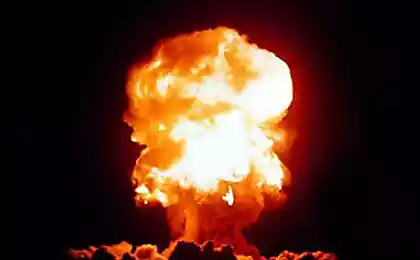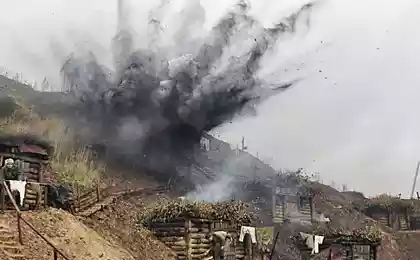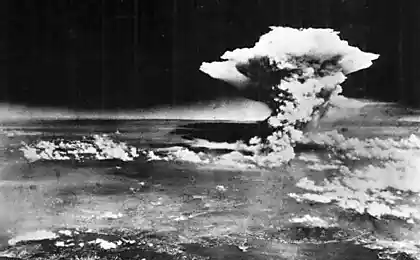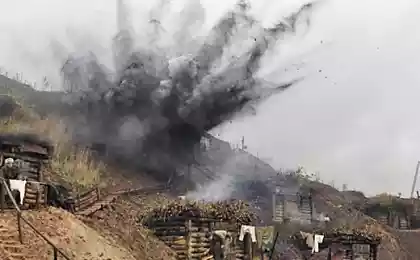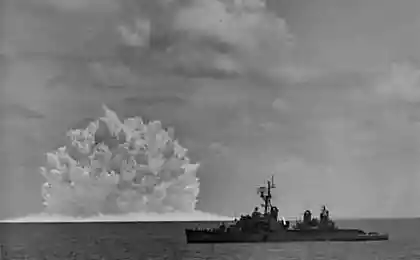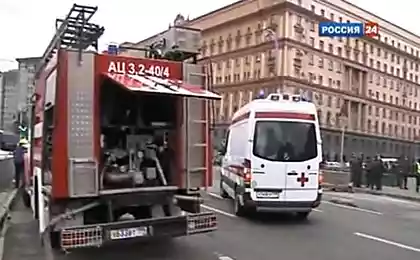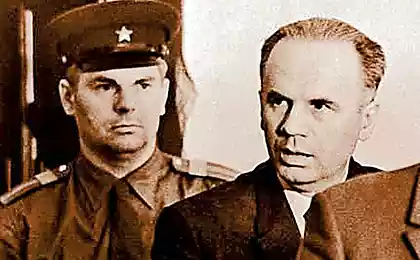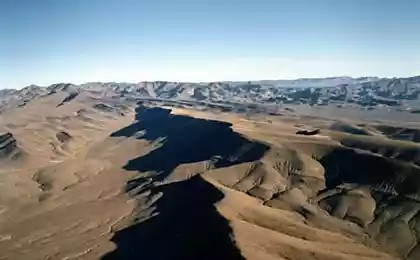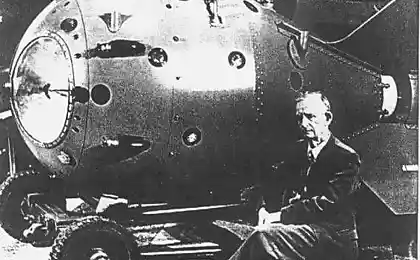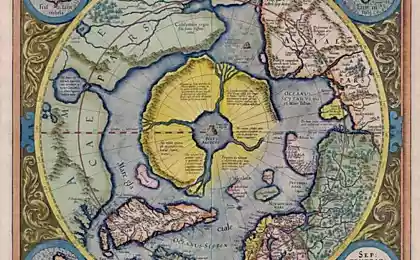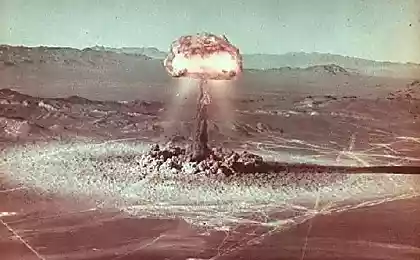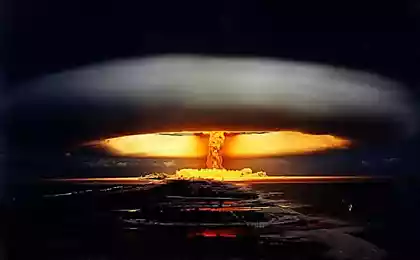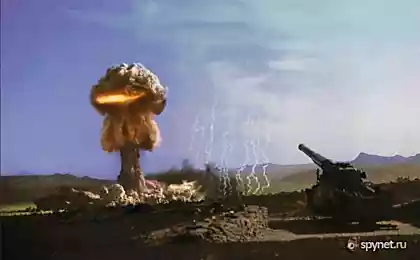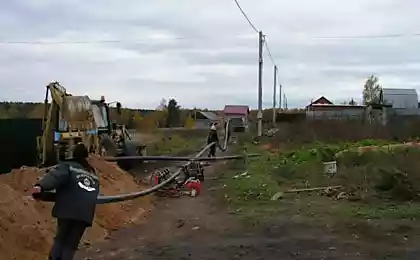829
Nuclear explosions for households. needs
In the period from 1965 to 1988 in the USSR was held 124 peaceful nuclear explosion in the interests of the national economy (including 117 - outside the boundaries of the nuclear test sites). Two of them ("Globus 1" in the Ivanovo region and "Kraton-3" in Yakutia) followed by accidents, for which there was a leak of radioactive decay products.
Industrial nuclear explosions in the USSR:
11 ph via yegorka
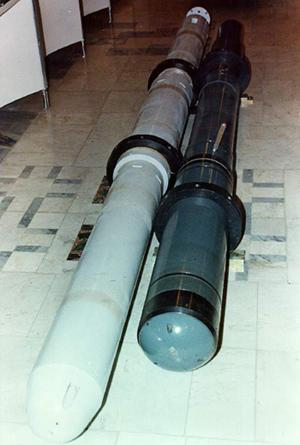
...
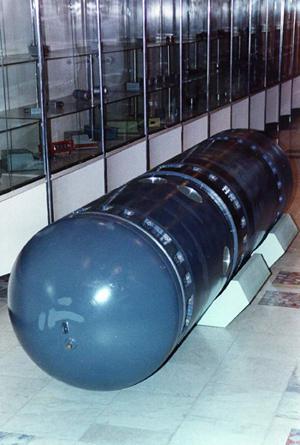
Explosions emission
It is the creation of canals, reservoirs, harbors and so on. What is the efficiency of such work? In a small ball focus tremendous energy. And it turns out that the cost per unit volume of a nuclear explosion is much less than that of conventional explosives. When this charge is made in such a way that when the power value it grows. The low cost of laying the shell: for conventional explosives have to create a gallery, build structures. For the laying of the nuclear charge is possible to use conventional research well. Typically, the cost of the charge is smaller than the drilling. Chagan
The first experiment in the Soviet Union on the use of nuclear explosion energy for peaceful purposes was an underground explosion in 1965 on the banks of the river Chagan 80 km west of Semipalatinsk to create a reservoir of large capacity. Power charge of 140 kilotons. Depth of the charge of 180 m. As a result of the explosion crater with a diameter of 520 meters and a depth of 90 m.
According to the plans of the Soviet scientists such craters from nuclear explosions were soon covered in dry regions of Central Asia - Kazakhstan is only required to create about forty reservoirs totaling up to 120-140 mln. M3. Research has shown that the accumulation of spring runoff in the river valleys, you can create containers in the form of deep craters, each of which can accommodate up to 3-5 million. M3 of water with little mirror evaporation. Delayed by a funnel water could be used for energy, irrigation and to prevent salinization of the Caspian, Aral and Azov Seas.
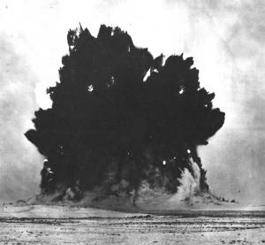
For several years in the Chagan Lake was settled by 36 species of fish (including even the Amazonian piranhas). Almost all of these species were not typical for the local fauna, and 90% of the organisms died. In the survivors, it was noted an abnormal number of mutations and changes in the appearance of the offspring (eg, freshwater cancer is extremely increased in size). In 1974, the experimental station was closed.
Radioactive contamination of the water of the lake at the end of the 90s. estimated at 300 picocuries / liter (maximum permissible level of water pollution on the total radioactivity of alpha particles is 15 picocuries / liter). Until now, the lake is used for livestock watering.

It looks like the land after 20 years of an underground nuclear explosion, 20 km from the epicenter
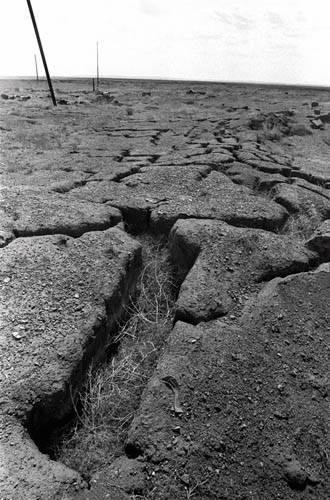
Kuelpor
In the early seventies, scientists planned underground mining northern Hibin (areas Kuelpor and Partomchorr). Ores are relatively poor. To their development turned out to be cost-effective, new technologies are needed. And then one of the defense experts of the Research Institute offered to conduct ore breaking with nuclear explosions. Experimental explosions at the mine Kuelpor were conducted in 1972 and 1984. They received the code name "Dnepr-1" and "Dnepr-2».
Nuclear explosive devices with energy 2 1 kt was used for crushing ore. It was a blast "Dnepr-1" produced in the Murmansk region in 1972. In order to minimize contamination of the ore products of the explosion, the bomb was placed outside the block of ore is crushed, that is on the boundary of the ore body and the overlying rock. The charge was further shielded layer of boron carbide. The experimental data have confirmed the calculated efficiency of nuclear explosions for crushing the ore bodies.
In the Murmansk region in 1984 it was produced by another explosion for breaking the ore ("Dnepr-2"), but it has been the explosion of two HLL group with energy 1, 8 kilotons each. In this experiment, it was used by the effect of the collision of shock waves, which significantly increases the yield of the ore.
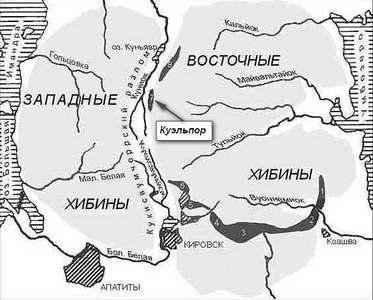
Mountain, formed as a result of the explosion
For more than 20 years of observations of the state of water in the facility "Dnepr" there have been no cases of exceeding the permissible concentration in the mine water, strontium-90, cesium-137 and plutonium-239
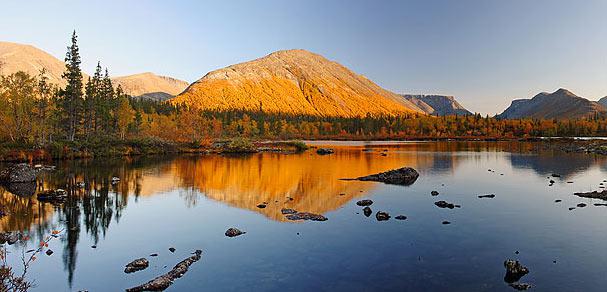
The transfer of the rivers burst
All I remember about the notorious projects diversion of northern rivers, but few know what methods planned to implement them. One of the most effective is the method of nuclear explosions. October 21, 1968 at the Semipalatinsk test site was carried out industrial explosion "Thelkow" whose purpose was to study the action of excavation of a nuclear explosion for the purpose of laying channel. For carrying out the explosion was chosen previously developed VNIITF charge small capacity at 0, 24 kt, laid at a depth of 31 meters. The explosion led to the formation of the crater with a diameter of 80 m and a depth of 20 meters. November 12, 1968 for the same purpose was held a second explosion " Thelkow-2 "at the same time undermining the already three nuclear warheads similar to those used in the experiment" Thelkow "pledged every 40 m. As a result of the explosion formed a recess in the form of trench length of 140 m, a width of 70 m and a depth of 16 meters." Thelkow-2 "the explosion was a model for the laying of the real channel" Pechora-Colva "to water transfer Pechora to the Caspian Sea. It is time to move from experiment to practice.
March 23, 1971 on the projected route of the Pechora-Kolvinskoye channel in the Perm region, 100 km north-west of the city Krasnovishersk there was a powerful triplex explosion - it worked three nuclear charge capacity of 15 kilotons each (remember, the same power was in the bomb leveled Hiroshima ), buried at a distance of 162-167 m from each other at a depth of 127 m. As a result of the explosion formed a channel length of 700 m, a width of 340 m and a depth of 10 to 15 m with a stable board with a slope angle of 8-10 degrees.
Quenching of powerful and uncontrolled oil and gas fountains
With the help of nuclear explosions extinguished uncontrolled gas fountains, which burned millions of cubic meters of gas daily. The world's first gas blowout was extinguished by a nuclear explosion in 1966 in the field of Urta-Bulak in Uzbekistan.
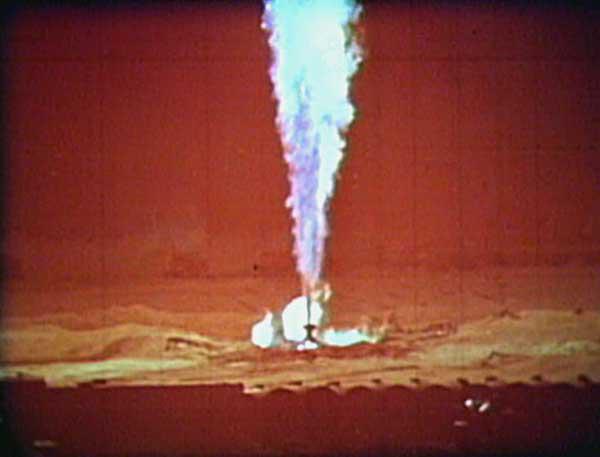
Creation of underground storage
Kamufletny explosion - an explosion produced so deep underground that the explosion chamber is not in communication with the earth's surface. There have been 15 explosions near Astrakhan, 6 explosions under the Urals to create a storage of gas condensate.
Near the gas fields can be seen burning torches - a gas condensate (a valuable fuel, motorists pour it into the car and drive). The gas after cleaning is in the pipeline, and gas condensate nowhere to go when the containers are filled. Therefore it and burn. Tanks are expensive and they take up a lot of space, sometimes explode. Ground container "gazyat" through valves, releasing into the atmosphere the condensate. At a depth of kilometers from a nuclear explosion creates voids in salt formations. This explosion eliminates the ingress of radioactive products on the surface. The explosion at a temperature of millions of degrees produced gas bubble - all there to evaporate. The bubble expands, it is surrounded by molten rock cools and forms a cavity. All radioactive substances remain in it. All radioactive fragments flow down to the bottom of the cavity, and then the melt lens cover melted rocks, and the protection of up to 10 meters!
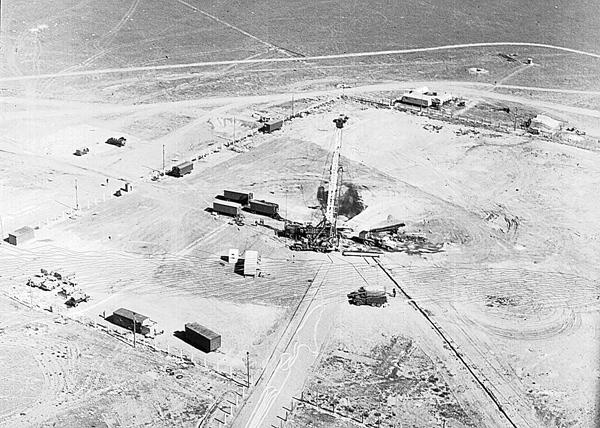
Deep seismic sounding of the Earth's crust
For mineral exploration geologists make a profit through a series of explosions. The explosions recorded by seismographs, which is determined by the structure of the crust. But you need to cut through the taiga for hundreds of kilometers and 20 kilometers every drill hole, which set a small charge. The charge is weak, so the results of the studies are not very reliable. In addition, in this way it is impossible to deeply probe the Earth's crust. Another picture of a nuclear explosion. The charge falls to a depth of 500 to 700 meters - this is done in order to radioactive substances do not fall through the groundwater to the surface. The profile of approximately 3000 km seismographs are placed, and it is held 3-4 explosion. Profiles were held in Siberia. Thanks to this, about 100 times the volume of reduced geological research.
Nuclear explosions for seismic sounding USSR
Of the dozens of bombings and was unsuccessful. In Yakutia, not well cemented and gases escape. This failure has undermined the credibility of the nuclear industry. From 1986 on all nuclear explosions moratorium.
Source:
Industrial nuclear explosions in the USSR:
11 ph via yegorka

...

Explosions emission
It is the creation of canals, reservoirs, harbors and so on. What is the efficiency of such work? In a small ball focus tremendous energy. And it turns out that the cost per unit volume of a nuclear explosion is much less than that of conventional explosives. When this charge is made in such a way that when the power value it grows. The low cost of laying the shell: for conventional explosives have to create a gallery, build structures. For the laying of the nuclear charge is possible to use conventional research well. Typically, the cost of the charge is smaller than the drilling. Chagan
The first experiment in the Soviet Union on the use of nuclear explosion energy for peaceful purposes was an underground explosion in 1965 on the banks of the river Chagan 80 km west of Semipalatinsk to create a reservoir of large capacity. Power charge of 140 kilotons. Depth of the charge of 180 m. As a result of the explosion crater with a diameter of 520 meters and a depth of 90 m.
According to the plans of the Soviet scientists such craters from nuclear explosions were soon covered in dry regions of Central Asia - Kazakhstan is only required to create about forty reservoirs totaling up to 120-140 mln. M3. Research has shown that the accumulation of spring runoff in the river valleys, you can create containers in the form of deep craters, each of which can accommodate up to 3-5 million. M3 of water with little mirror evaporation. Delayed by a funnel water could be used for energy, irrigation and to prevent salinization of the Caspian, Aral and Azov Seas.

For several years in the Chagan Lake was settled by 36 species of fish (including even the Amazonian piranhas). Almost all of these species were not typical for the local fauna, and 90% of the organisms died. In the survivors, it was noted an abnormal number of mutations and changes in the appearance of the offspring (eg, freshwater cancer is extremely increased in size). In 1974, the experimental station was closed.
Radioactive contamination of the water of the lake at the end of the 90s. estimated at 300 picocuries / liter (maximum permissible level of water pollution on the total radioactivity of alpha particles is 15 picocuries / liter). Until now, the lake is used for livestock watering.

It looks like the land after 20 years of an underground nuclear explosion, 20 km from the epicenter

Kuelpor
In the early seventies, scientists planned underground mining northern Hibin (areas Kuelpor and Partomchorr). Ores are relatively poor. To their development turned out to be cost-effective, new technologies are needed. And then one of the defense experts of the Research Institute offered to conduct ore breaking with nuclear explosions. Experimental explosions at the mine Kuelpor were conducted in 1972 and 1984. They received the code name "Dnepr-1" and "Dnepr-2».
Nuclear explosive devices with energy 2 1 kt was used for crushing ore. It was a blast "Dnepr-1" produced in the Murmansk region in 1972. In order to minimize contamination of the ore products of the explosion, the bomb was placed outside the block of ore is crushed, that is on the boundary of the ore body and the overlying rock. The charge was further shielded layer of boron carbide. The experimental data have confirmed the calculated efficiency of nuclear explosions for crushing the ore bodies.
In the Murmansk region in 1984 it was produced by another explosion for breaking the ore ("Dnepr-2"), but it has been the explosion of two HLL group with energy 1, 8 kilotons each. In this experiment, it was used by the effect of the collision of shock waves, which significantly increases the yield of the ore.

Mountain, formed as a result of the explosion
For more than 20 years of observations of the state of water in the facility "Dnepr" there have been no cases of exceeding the permissible concentration in the mine water, strontium-90, cesium-137 and plutonium-239

The transfer of the rivers burst
All I remember about the notorious projects diversion of northern rivers, but few know what methods planned to implement them. One of the most effective is the method of nuclear explosions. October 21, 1968 at the Semipalatinsk test site was carried out industrial explosion "Thelkow" whose purpose was to study the action of excavation of a nuclear explosion for the purpose of laying channel. For carrying out the explosion was chosen previously developed VNIITF charge small capacity at 0, 24 kt, laid at a depth of 31 meters. The explosion led to the formation of the crater with a diameter of 80 m and a depth of 20 meters. November 12, 1968 for the same purpose was held a second explosion " Thelkow-2 "at the same time undermining the already three nuclear warheads similar to those used in the experiment" Thelkow "pledged every 40 m. As a result of the explosion formed a recess in the form of trench length of 140 m, a width of 70 m and a depth of 16 meters." Thelkow-2 "the explosion was a model for the laying of the real channel" Pechora-Colva "to water transfer Pechora to the Caspian Sea. It is time to move from experiment to practice.
March 23, 1971 on the projected route of the Pechora-Kolvinskoye channel in the Perm region, 100 km north-west of the city Krasnovishersk there was a powerful triplex explosion - it worked three nuclear charge capacity of 15 kilotons each (remember, the same power was in the bomb leveled Hiroshima ), buried at a distance of 162-167 m from each other at a depth of 127 m. As a result of the explosion formed a channel length of 700 m, a width of 340 m and a depth of 10 to 15 m with a stable board with a slope angle of 8-10 degrees.
Quenching of powerful and uncontrolled oil and gas fountains
With the help of nuclear explosions extinguished uncontrolled gas fountains, which burned millions of cubic meters of gas daily. The world's first gas blowout was extinguished by a nuclear explosion in 1966 in the field of Urta-Bulak in Uzbekistan.

Creation of underground storage
Kamufletny explosion - an explosion produced so deep underground that the explosion chamber is not in communication with the earth's surface. There have been 15 explosions near Astrakhan, 6 explosions under the Urals to create a storage of gas condensate.
Near the gas fields can be seen burning torches - a gas condensate (a valuable fuel, motorists pour it into the car and drive). The gas after cleaning is in the pipeline, and gas condensate nowhere to go when the containers are filled. Therefore it and burn. Tanks are expensive and they take up a lot of space, sometimes explode. Ground container "gazyat" through valves, releasing into the atmosphere the condensate. At a depth of kilometers from a nuclear explosion creates voids in salt formations. This explosion eliminates the ingress of radioactive products on the surface. The explosion at a temperature of millions of degrees produced gas bubble - all there to evaporate. The bubble expands, it is surrounded by molten rock cools and forms a cavity. All radioactive substances remain in it. All radioactive fragments flow down to the bottom of the cavity, and then the melt lens cover melted rocks, and the protection of up to 10 meters!

Deep seismic sounding of the Earth's crust
For mineral exploration geologists make a profit through a series of explosions. The explosions recorded by seismographs, which is determined by the structure of the crust. But you need to cut through the taiga for hundreds of kilometers and 20 kilometers every drill hole, which set a small charge. The charge is weak, so the results of the studies are not very reliable. In addition, in this way it is impossible to deeply probe the Earth's crust. Another picture of a nuclear explosion. The charge falls to a depth of 500 to 700 meters - this is done in order to radioactive substances do not fall through the groundwater to the surface. The profile of approximately 3000 km seismographs are placed, and it is held 3-4 explosion. Profiles were held in Siberia. Thanks to this, about 100 times the volume of reduced geological research.
Nuclear explosions for seismic sounding USSR
Of the dozens of bombings and was unsuccessful. In Yakutia, not well cemented and gases escape. This failure has undermined the credibility of the nuclear industry. From 1986 on all nuclear explosions moratorium.
Source:
